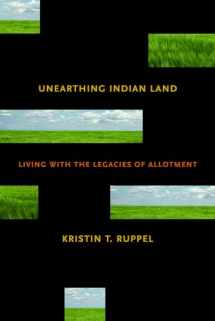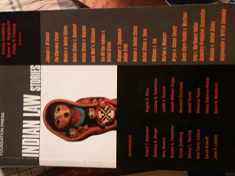
Unearthing Indian Land: Living with the Legacies of Allotment
ISBN-13:
9780816527113
ISBN-10:
0816527113
Edition:
Illustrated
Author:
Kristin T. Ruppel
Publication date:
2008
Publisher:
University of Arizona Press
Format:
Paperback
237 pages
Category:
Native American
,
Americas History
FREE US shipping
Book details
ISBN-13:
9780816527113
ISBN-10:
0816527113
Edition:
Illustrated
Author:
Kristin T. Ruppel
Publication date:
2008
Publisher:
University of Arizona Press
Format:
Paperback
237 pages
Category:
Native American
,
Americas History
Summary
Unearthing Indian Land: Living with the Legacies of Allotment (ISBN-13: 9780816527113 and ISBN-10: 0816527113), written by authors
Kristin T. Ruppel, was published by University of Arizona Press in 2008.
With an overall rating of 4.4 stars, it's a notable title among other
Native American
(Americas History) books. You can easily purchase or rent Unearthing Indian Land: Living with the Legacies of Allotment (Paperback) from BooksRun,
along with many other new and used
Native American
books
and textbooks.
And, if you're looking to sell your copy, our current buyback offer is $4.05.
Description
Unearthing Indian Land offers a comprehensive examination of the consequencesof more than a century of questionable public policies. In this book,Kristin Ruppel considers the complicated issues surrounding American Indianland ownership in the United States.
Under the General Allotment Act of 1887, also known as the Dawes Act,individual Indians were issued title to land allotments while so-called “surplus”Indian lands were opened to non-Indian settlement. During the forty-seven yearsthat the act remained in effect, American Indians lost an estimated 90 millionacres of land—about two-thirds of the land they had held in 1887. Worse, theloss of control over the land left to them has remained an ongoing and insidiousresult.
Unearthing Indian Land traces the complex legacies of allotment, includingnumerous instructive examples of a policy gone wrong. Aside from the initialcatastrophic land loss, the fractionated land ownership that resulted from theact’s provisions has disrupted native families and their descendants for morethan a century. With each new generation, the owners of tribal lands grow innumber and therefore own ever smaller interests in parcels of land. It is not uncommonnow to find reservation allotments co-owned by hundreds of individuals.Coupled with the federal government’s troubled trusteeship of Indian assets,this means that Indian landowners have very little control over their own lands.
Illuminated by interviews with Native American landholders, this book isessential reading for anyone who is interested in what happened as a result of thefederal government’s quasi-privatization of native lands.
Under the General Allotment Act of 1887, also known as the Dawes Act,individual Indians were issued title to land allotments while so-called “surplus”Indian lands were opened to non-Indian settlement. During the forty-seven yearsthat the act remained in effect, American Indians lost an estimated 90 millionacres of land—about two-thirds of the land they had held in 1887. Worse, theloss of control over the land left to them has remained an ongoing and insidiousresult.
Unearthing Indian Land traces the complex legacies of allotment, includingnumerous instructive examples of a policy gone wrong. Aside from the initialcatastrophic land loss, the fractionated land ownership that resulted from theact’s provisions has disrupted native families and their descendants for morethan a century. With each new generation, the owners of tribal lands grow innumber and therefore own ever smaller interests in parcels of land. It is not uncommonnow to find reservation allotments co-owned by hundreds of individuals.Coupled with the federal government’s troubled trusteeship of Indian assets,this means that Indian landowners have very little control over their own lands.
Illuminated by interviews with Native American landholders, this book isessential reading for anyone who is interested in what happened as a result of thefederal government’s quasi-privatization of native lands.


We would LOVE it if you could help us and other readers by reviewing the book
Book review

Congratulations! We have received your book review.
{user}
{createdAt}
by {truncated_author}




